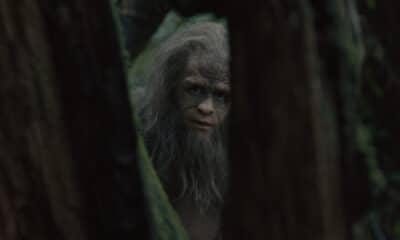
X-Men: the new class
With the constant barrage of comic-book adaptations, it’s hard to keep track of superheroes these days. It’s even harder when a film is dealing with almost fifty years worth of narrative and a seemingly limitless number of characters. Until now, cinemagoers have been relatively familiar with a number of mutants from Marvel’s X-Universe; with each new X-MEN film came a fresh selection of heroes and villians, some faithful to their comic original, and some wildly different. These varying interpretations have become a staple of the cinematic superhero genre, some with more success than others: for every Heath Ledger’s Joker there is a Willem Dafoe’s Green Goblin. Taking this into consideration, just how does the new crop of characters from X-MEN: FIRST CLASS fare? Who are these mutants and what exactly can they do? And are they anything like the comic-book original?
As we approach the release of the highly-anticipated X-prequel, THN takes a look at the class of 2011, hoping to enlighten the novices and refresh the veterans. In the first part of our ‘Rough Guide’ we take a look at the two main men from the X-Men Universe…

The original Charles Xavier
Professor X
Real Name: Charles Francis Xavier
Mutant Abilities: Telepath
Nationality: U.S. Citizen
First Appearance: X-Men #1 (1963)
Played By: James McAvoy
Comics’ History: Born and raised in New York, the young Charles Xavier – the worlds most powerful telepath – studied genetics and biophysics at Oxford University. Already completely bald due to his telepathic mutant abilities, Charles travelled the world after graduating, meeting Erik Magnus Lehnsherr in Israel. Erik, who was also a powerful young mutant, would later become the villainous Magneto. Together they halted the terrorist organization Hydra, but it was soon clear that the pair had different goals; whilst Charles maintained that mutants and humans could live peacefully together, Erik believed mutants would be hunted down and eliminated.

James McAvoy as the future Professor X
After departing from Erik, Charles made his way back to the U.S., and on route was crippled during a battle with the alien Lucifer. On his eventual return home, Charles began a training school for young mutants at his Westchester mansion. He telepathically searched for other mutants will the help of ‘Cerebro’ – a machine that helped amplify Charles’ psychic abilities – hoping to hone and develop their abilities for the greater good. The original group, dubbed the ‘X-Men’, consisted of Cyclops, Marvel Girl, Beast, Angel, and Ice Man.
Over the following years, the X-Men engaged in many battles for the good of humanity, though their species was often treated with revolt and disdain. A great number of these battles were against Magneto and his Brotherhood of Mutants, who sought to dominate the earth as the superior beings.

Professor X
Though often victorious, Charles’ X-Men were occasionally defeated, and after the fearsome Krakoa captured his original team, he enlisted a number of other mutants into the X-Men: Banshee, Coloussus, Nightcrawler, Sunfire, Storm, and Wolverine. Following the rescue of the original team, Cyclops helped Charles train the new recruits, and the X-Men would hereafter take many forms.
Much like his heroic group, Charles himself has seen many changes: after a battle with the alien Brood, he regained his ability to walk, having had his destroyed body replaced with a clone version (though Charles’ ability to walk has come and gone many times over the years, to an almost unbelievable extent, cynics might say). He has also led a number of teams other than the X-Men, including the mutant factions of the New X-Men, Generation X, and even the Brotherhood of Mutants at one stage.
As the patriarch of the X-Men, and the forerunner of peace between mutants and humans, Charles Xavier is the key figure in the X-Universe. He has led defeats over a great deal of powerful forces, such as the mutant-hunting Sentinels, the Skrulls, the eternal mutant Apocalypse, and of course, Magneto.
Different how? There are a number of changes made in the character from page to screen, most notably in the hair and legs department. It stands to reason that Charles should have the ability to walk at this early stage in his life, but whether his paralysis will be depicted in the same way, or if at all, remains to be seen. Another major difference in X-MEN: FIRST CLASS comes in the form Charles’ adopted sibling Mystique. In the comics, Charles shares his upbringing with spiteful stepbrother Cain, who would later become superhuman Juggernaught (played by Vinnie Jones in X-MEN: THE LAST STAND… ahem). The biggest change, of course, comes in Charles’ relationship with Erik/Magneto, who is now part of the original X-Men. Charles is also something of a ladies man in FIRST CLASS, using his powers of telepathy to woo the fairer sex. Surely the comics’ version – and certainly Patrick Stewart – would have shown a bit more decorum…

The comics' version of Magneto
Magneto
Real Name: Max Eisenhardt
Mutant Abilities: The power to control all forms of magnetism
Nationality: Unknown
First Appearance: X-Men #1 (1963)
Played By: Michael Fassbender
Comics’ History: Max Eisenhardt’s early years were spent in Auschwitz, where he witnessed the murder of his family. Surviving the Holocaust, he married and had a young daughter who was tragically killed in a fire. Max attempted to save her with his mutant powers but failed. He then used his abilities to kill humans in an act of twisted retribution.
 Max changed his identity to Erik Magnus Lehnsherr in an effort to hide from those who pursued his kind, and he soon met Charles Xavier. Together they theorised about relations between humans and Homo sapiens superior (the name Max attributed to mutants). Max eventually abandoned Charles with a stash of Nazi gold, and, due to fear of mutant persecution, formed his Brotherhood of Mutants.
Max changed his identity to Erik Magnus Lehnsherr in an effort to hide from those who pursued his kind, and he soon met Charles Xavier. Together they theorised about relations between humans and Homo sapiens superior (the name Max attributed to mutants). Max eventually abandoned Charles with a stash of Nazi gold, and, due to fear of mutant persecution, formed his Brotherhood of Mutants.
Max – now named ‘Magento’ – would go on to battle Charles Xavier’s X-Men many times in the following years. Magneto believed that mutants would eventually be the dominant life form, and his vengeful ways often brought him into conflict with other superheroes, such the Avengers and the Fantastic Four.
There have been moments of redemption throughout Max’s life; after almost killing the mutant Kitty Pride, he reevaluated his stance and briefly joined the X-Men. But it was not long before Max had reverted to his old ways, declaring war of humankind with his Brotherhood of Mutants (which has included his own twin children Quicksilver and Scarlet Witch, Toad, Juggernaught, and Astra, to name but a few).
Max has also displayed political power, as he held sovereignty over the island nation of Genosha, where he had previously been involved in civil war between humans and mutants.
Though a powerful and dominant mutant, Max has always been vulnerable to the psychic abilities of his old friend/enemy Charles Xavier, and his iconic helmet is designed to prevent Charles from entering and manipulating his mind.

Michael Fassbender as Erik Lehnsherr
Magneto is currently a reformed character and once again a member of the X-Men. However, he remains in a coma following an incident in which he saved the life of Kitty Pride. When he inevitably awakens, whether he will fight alongside or against the X-Men is unknown…
Different How? The young Magneto – birth name Erik –meets his future adversary Sebastian Shaw in Auschwitz. Erik also embarks on a mission of vengeance, hunting down the Nazis that murdered his family.
The major difference between the comics’ universe and X-MEN: FIRST CLASS is Magneto’s involvement in the mutant team: not only is he part of the original line-up, he also helps find and recruit other members.
Magneto’s story will serve as the most interesting aspect of the new movie, and audiences will be wondering whether they will witness his descent into evildoing. And will we see not only the birth of the X-Men, but also the Brotherhood of Mutants?
Tom Fordy is a writer and journalist. Originally from Bristol, he now lives in London. He is a former editor of The Hollywood News and Loaded magazine. He also contributes regularly to The Telegraph, Esquire Weekly and numerous others. Follow him @thetomfordy.

Latest Posts
-


Apple TV
/ 20 hours agoTrailer: André Holland leads Apple’s new limited series, ‘The Big Cigar’
Apple TV+ has released the full trailer for The Big Cigar, a new, six-episode...
By Paul Heath -


Film News
/ 21 hours agoUK trailer, poster and release date for Sundance smash ‘Sasquatch Sunset’
Premiering in the UK at the Sundance London event in June is the brilliant...
By Paul Heath -


Disney+
/ 22 hours agoNew trailer for ‘Becoming Karl Lagerfeld’ with Daniel Brühl
A trailer has landed for the June-released Becoming Karl Lagerfeld, the Disney+/ Hulu series...
By Paul Heath -


Film News
/ 22 hours agoUK release date revealed for Cannes film ‘The Delinquents’
MUBI has announced the release date for The Delinquents, the Cannes Un Certain Regard-premiering...
By Paul Heath















